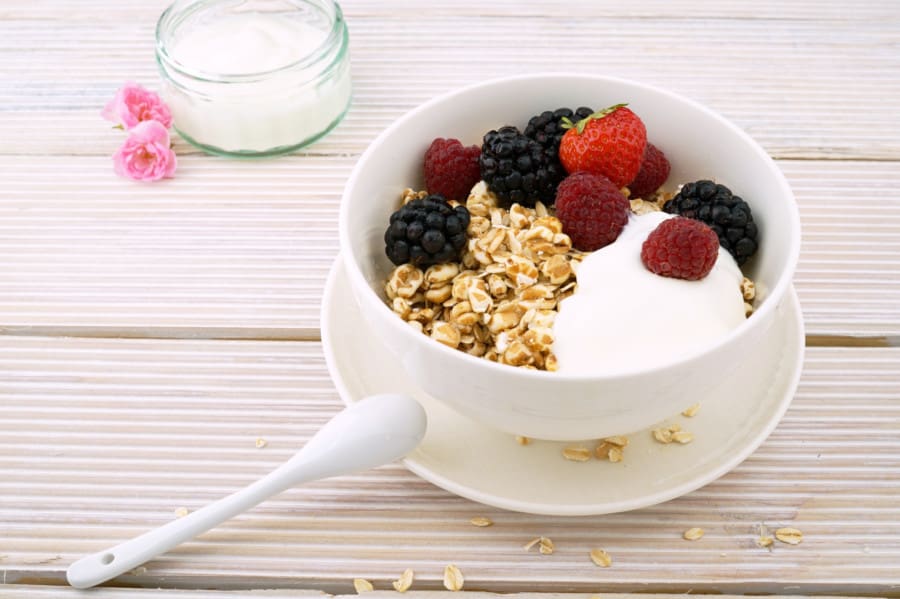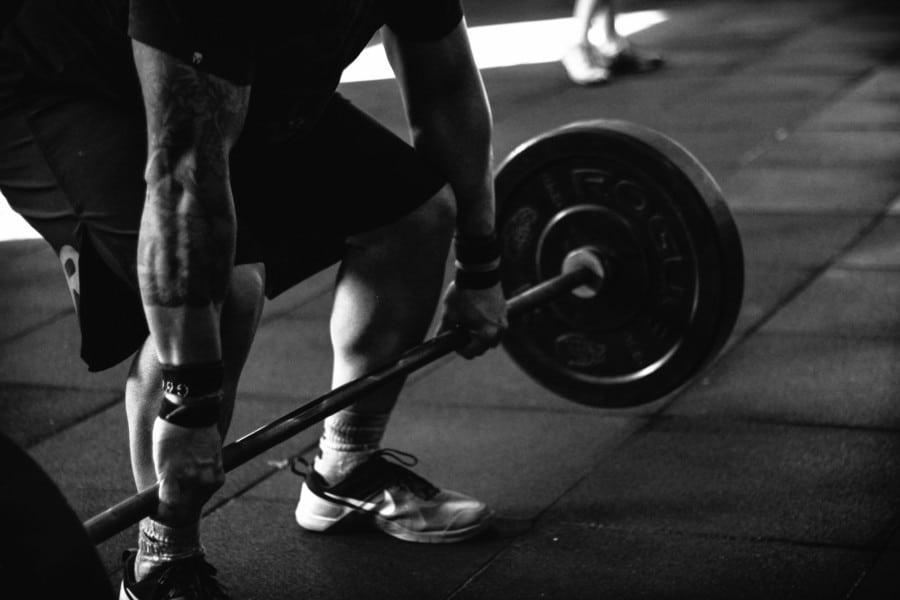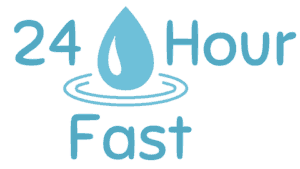You may be ready to try intermittent fasting but wondering if you will be able to keep your workout routine at the same time? It can seem conflicting indeed. Especially if you are used to working out in the morning when most people intermittent fasting are in a fasted state. So can you work out in the morning while intermittent fasting? That’s what I am going to answer here, with all the information you need to best schedule your training.

Clarifying your goal
The short answer is yes. But the reality is always more complicated than that. It depends on your goal and your current fitness and body adaptability level.
There are various reasons why someone would want to exercise. If you are training for a specific competition or season where your main goal is to improve and optimize your performance, a fasted morning workout may not be the most optimal training for you. It can still be beneficial in some specific cases depending on the type of workouts but we will dive into this a bit later.
If your main goal is to lose weight, then a fasted workout can become extremely interesting. Similarly, if you exercise mainly to maintain or optimize your overall health, it can also be beneficial to work out in a fasted state.

On the other hand, if you want to build muscle, fasted workouts are not going to be the easiest route to follow. Though it has been shown that it is possible to maintain muscle mass while working out in a fasted state. Fasting doesn’t mean losing muscle mass. However, if your sole goal is to gain muscle it will likely be easier to incorporate training in a fed state as well in your program.
Benefits of a fasted workout
There are multiple benefits of exercising and working out regularly but we will focus on the specific benefits of fasted workouts here.
Exercise triggers the secretion of the human growth hormone. Fasting also enhances growth hormone secretion. Combining those two effects by exercising in a fasted state will have a huge impact on growth hormone secretion. This is extremely important because this growth hormone is involved in a lot of different processes in the body such as cell repair, metabolism, muscle growth, exercise performance, and recovery among others.

Another benefit of working out during your fast is that it can enhance the fat burning process by inducing higher fat burning oxidation. This means your body will be more effective at using fat for fuel than in a fed state where it relies primarily on glucose and glycogen reserves. This effect can be positive when trying to lose weight in particular.
Training in a fasted state also leads to improved insulin sensitivity and glycemic control. High insulin sensitivity is beneficial as it allows the cells to use blood glucose more efficiently. Low insulin sensitivity, on the other hand, can lead to insulin resistance and potentially progress to type 2 diabetes.
The anabolic window
You may have heard of the anabolic window, also called the metabolic window. It represents the 20 to 30 minutes after exercise where it would be important to eat to shift the body from a catabolic to an anabolic state. It is a famous concept but has no real scientific evidence to fully back it up.

This research questioning the accuracy of such an anabolic window shows inconsistency in findings, which doesn’t provide definitive answers on its validity. However, it is shown that in a fasted state specifically, net muscle protein balance remains negative post-exercise. This is in favor of refueling soon after the fasted workout to switch to an anabolic state.
In summary, while research is not fully consistent with the validity of this anabolic window, it is clear that it depends on a lot of other different factors. Like your pre-workout state (fasted or fed) or your main exercise goals.
If muscle mass gain is your main objective, it is suggested that post-workout nutrition is beneficial in the case of a fasted workout. But if a pre-exercise meal was taken 1 to 2 hours before the workout, this can function as post-exercise nutrition too since the digestion and absorption will happen well into the recovery period.

Working out your timing
Optimizing your training timing within your intermittent fasting will depend on various factors, among others:
- When is your preferred time for exercising?
- What is your current or expected intermittent fasting schedule?
- What type of sports do you practice?
- How well do you perform on an empty stomach and is there room for adaptability?
We will dive into more details down below, but here is a summary table to help you optimize your training along with your intermittent fasting schedule. It details when each type of workout can be performed:
| Low-intensity cardio | High-intensity cardio | Low- intensity strength training | High-intensity strength training | Intermittent fasting schedule example | |
| Examples | Steady slow pace run or cycling ride | HIIT training, speed workout | Resistance training, bodyweight training, yoga | Weight lifting | 16/8 method |
| Duration | Up to 45-60 minutes | Any duration | Up to 45-60 minutes | Any duration | 16 hours fast 8-hour eating window |
| End of the fasting window | Yes | No (except if fully adapted to both fast and workout) | Yes | No (except if fully adapted) | 8 am: workout 10 am: breaking the fast |
| Within the eating window | Yes | Yes | Yes | Yes | Workout can be anytime within 10 am to 6 pm |
| Beginning of the fasting window | Yes | Yes | Yes | Yes | Dinner: ending by 6 pm Workout: 7 pm |
When talking about a fasted workout, you need to give your body time to adapt. If you are new to intermittent fasting or experimenting longer fasts, it is best to adapt to this new fasting routine first and incorporate workouts in a fasted state afterward. Similarly, if you are trying new sports or higher difficulty levels for your workouts, it is recommended to practice those first in a fed state before adding the fast to the equation. In short, don’t do too much too soon.
Can you workout in the morning when intermittent fasting?

Most common intermittent fasting methods will extend the overnight fast and leave you in a fasted state upon waking up. But the morning might also be your ideal time to exercise. So can you still workout in the morning while fasting? As we saw before, the short answer is yes. But with a few caveats.
It is best to prefer a low to medium intensity workout in that case. For example, a steady pace run or a slow to medium speed elliptical session. If you don’t want to do cardio, you can consider strength training like bodyweight training, resistance training, yoga, or pilates to name a few. Low-intensity exercise uses a higher percentage of fat for energy vs. relying on muscle glycogen, which aligns with the type of fuel used when fasting.

If muscle mass gain is your primary goal, post-nutrition workout is important to switch your body into an anabolic state. In that case, working out towards the end of your fast is ideal if possible. If this is not your main goal, pushing your first meal a few hours post-workout is not proven to be detrimental. As long as you are feeling well and not pushing your body too much too fast.
Working out during your eating window
Working out during your eating window is perfectly fine and is usually not an issue.

Here are the workouts to favour during that time:
- High-intensity cardio workouts: those can range from a speed-focused run to a boxing training or a HIIT session (High-Intensity Interval Training). They are best to be performed in a fed state as they use glycogen primarily as a fuel source.
- Long cardio workouts: low-intensity cardio sessions can be performed in a fasted state. However, if the duration is over an hour, it is best to perform them after eating. Especially if your body is still adapting and improving its fat-burning efficiency.
- High-intensity strength training: CrossFit sessions or powerlifting are high in intensity and demand more from your body in terms of energy. That is why it is best to schedule them after a meal when your glycogen reserves are full.
The above details are recommendations. They don’t mean you cannot perform those workouts during your fasting window. But unless you are an experienced athlete trained to practice those workouts and fully adapted to fasting, it is best to proceed with caution.

Working out after your eating window
Some people prefer to workout in the evening. When intermittent fasting, it usually means after your last meal. As we see in this discussion about the anabolic window, if the pre-workout meal is taken within 1 to 2 hours it will actually provide nutrition for the post-workout as well. Because digestion and nutrient assimilation will take time and your glycogen reserves will then be replenished.
You can see on this subject a video from Dr. Eric Berg discussing intermittent fasting and exercise timing. He actually mentions that he exercises at the beginning of the fast, after eating his last meal.
This can be convenient for some people based on their own life schedule. However, make sure to take into account the effects of exercise on sleep. Exercising too close to your bedtime can disrupt your sleep. If you opt for this workout timing, make sure it aligns well with your sleep schedule.
What about longer fasts?
Longer fasts like 24-hour fasts are a little bit different in the sense that your fasting window lasts for a full day.
There are several methods of doing a 24-hour fast:
- The 5/2 method: it involves reducing your calorie intake significantly or completely for 2 days during the week. Those days are not consecutive. The other 5 days of the week are regular eating days.
- Alternate-day fasting method: similarly, it involves a 24-hour fast or significant calorie reduction every other day.
- Weekly 24-hour fast: as indicated in the name it means fasting for 24-hours once a week. Doing it every other week is also possible for a lower fast frequency.
Regardless of the method followed, because those involved longer fast durations, if you want to workout on the fasting days, it is best to prefer low-intensity workouts. Similarly to the workouts done during the fasting window of a daily intermittent fasting schedule.
Longer fasts than 24 hours are usually not done on a regular basis. It is best to consult your medical practitioner before undertaking a longer fast like this. Working out during a longer fast definitely needs to be supervised as well in that case.

Performance impact of a fasted workout
As we saw previously, different types of workouts are best suited depending on your state, fasted, or fed state. Fasted workouts can definitely bring some benefits, but does it impact your performance?
Well, the literature is not conclusive. Some studies showed decreased performance while others didn’t show any impact. Fasted high-intensity workouts will usually lead to a lower performance than the same workout in a fed state. However, for low to medium-intensity exercise, there is no clear evidence suggesting a lower performance.
The best is to experiment by yourself and analyze your performance and how you feel after a fasted workout compared to the same one done during your eating window. If you are not training for a specific competition, this may not be the most important element to consider though. How you feel during and after your workout and whether exercising brings you the benefits you expect might be more important to take into account.
Eating enough and eating well

One factor to pay attention to, when intermittent fasting, is making sure you eat enough over a 24-hour period if fasting daily or over a week if practicing 24-hour fasts.
This will allow your body to use and store sufficient energy to fuel your workouts, whether you do them fed or fasted.
Having a healthy and balanced diet is the foundation of your nutrition. You want to make sure you hit your macro-nutrients needs while prioritizing whole foods to maximize micro-nutrients and vitamins. Optimizing the timing of your workouts with your intermittent fasting schedule won’t be as beneficial if your diet is unhealthy, to begin with.
Listen to your body

When it comes to intermittent fasting, exercising or both combined, the most valuable advice is to listen to your body. If you feel dizzy or very weak, you might be dehydrated or experiencing low blood sugar. If that’s the case, you should not force and take care of your nutrition first.
By experimenting with different types of workouts and different timings, you will soon have a sense of your usual energy level and performance while fasting. Most importantly, don’t do any drastic changes too fast. Your body can adapt but you need to give it enough time.
And if you really don’t feel comfortable exercising while fasting, it may not be the best option for you. In the end, working out should be beneficial for your body and mind.
Conclusion
Working out in the morning in a fasted state is definitely a possibility. But it’s important to consider the type of workout, its intensity level, and its duration. Adapting to intermittent fasting on one hand and to the type of exercise you want to perform on the other hand is important before combining both. Listen to your body to know what is working for you and what is not.
